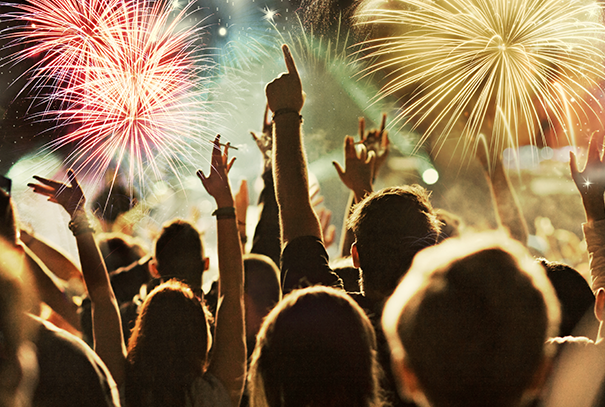Author: Andy Cotter

Organised fireworks displays have become more popular in recent years, both from a cost and value perspective for attendees, but also from a health and safety viewpoint as many people now prefer to ‘leave it to the professionals’. However, even though it is more likely for injuries to occur at private or family displays, incidents can and do happen at organised events—from sparkler injuries to mishaps due to stray or faulty fireworks.
Whether you’re organising a Diwali celebration, a fifth of November bonfire night event or an outdoor concert with fireworks, it is imperative that everyone involved in planning and running the event follows the appropriate safety and legislation guidelines. This is not only to protect the public, volunteers and organisers, but also from a liability perspective in case of an injury claim.
Remember, remember...
A sparkler can reach temperatures of 20 times the boiling point of water.
Over 550 children under 16 are taken to A&E in the four weeks surrounding bonfire night alone.
The majority of injuries are to the eyes, head or hands—potentially leading to visible scars for life.
Before the event
Preparation is everything and before you choose your date and location, do your research to check for other events that may be happening in the area—you want to maximise your attendance. If you are planning a large event (more than 1,000 attendees) you should advise your insurance broker.
Ensure the relevant local authorities have been notified and permission for the event is granted, and notify the fire brigade at least seven days before the event.
For councils, it may be the case that a working party or a sub-committee of the council must be the sole organiser of the event in order for the event to be insured under the council’s insurance policy. Again, check with your broker.
Whatever your organisation and however large or small your event, all volunteers and employees must receive appropriate training, and this should be recorded in writing, along with a written risk assessment for the proposed event.
Fireworks must be purchased from reputable, licensed sellers, and have a CE mark. They should not be modified in any way, and manufacturers’ guidelines for their storage should be strictly adhered to. If you are not employing the services of a professional fireworks display operator, your display should only contain fireworks in categories 1, 2 and 3. Category 4 fireworks are the largest professional pyrotechnics available and can only be fired by licensed operators.
It’s also important to check your timings—it is illegal to let fireworks off between 11 p.m. and 7 a.m., however, there are some exceptions. These are:
- Diwali night—1 a.m.
- Bonfire night—12 midnight
- New Years’ Eve—1 a.m.
- Chinese New Year—1 a.m.
On the night
You must ensure that any requirements from the authorities are fully complied with and carry out your final site inspection and risk assessment, checking for any hazards, combustible materials, etc. There must be an appropriate first aid presence on site, in line with the risk assessment document, as well as appropriate fire extinguishing equipment which employees and volunteers have been instructed to operate safely.
Any bonfire should be kept at least 75 metres away from any premises, car park or storage of any flammable or dangerous material. It should also be at least 25 metres away from the firework display area and not located within five metres of any trees, fencing or other combustible material.
Keep fireworks in a closed box and use them one at a time, being sure you read and follow the instructions on each firework. Keep members of the public (especially children) away from the display areas and never give sparklers to children under five years old. You should also provide buckets of water for spent sparklers to avoid the risk of them being picked up from the ground while still hot.
If a defective firework causes injury or damage to property it is recommended that you keep the remains of the firework, packaging, instructions and purchase receipt as it may be possible to make a claim against the seller.
After the event
Once the event has finished, carry out an initial check of the area and ensure any unused fireworks are safely taken away and correctly stored. Have a team check the site in daylight the following day to clear up any spent fireworks, sparklers and any other potentially hazardous items. If you want to extend this clear-up to include extra volunteers, take a look at our guidance for supporting community litter-picks.
Lastly, create a record of what worked well at your event, what could be improved on for the next one, and any risk management issues or concerns you were able to identify and learn from.
If you need any further information or would like to speak to one of our risk management specialists, please get in touch.
We hope your event is a great success!


